Dorich House | The Original Design
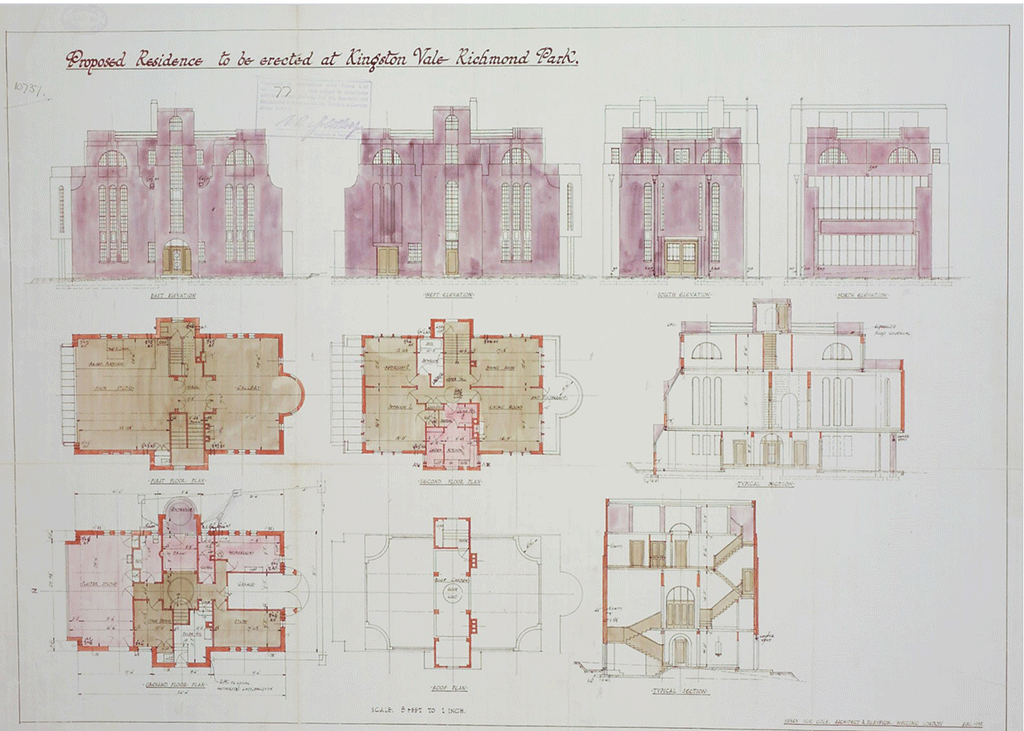
Designed by Gordine in 1935 as a home and workplace for herself and her husband, the Hon. Richard Hare, Dorich House was unique, not fitting neatly into any architectural style. In designing the house, Gordine drew on references from her previous homes and the countries in which she had lived – Latvia, Estonia, France, and Malaysia (then British Malaya) – to create a ‘dream home’ designed from the inside out, with the interiors in mind rather than grand façades.
An article about Dorich House published in Country Life in 1938 reported ‘As a sculptor [Dora Gordine] thinks naturally in terms of space and volume…She knew what she wanted in [her] house and studio, and … why she wanted it’, while The Lady reported that the house was ‘Entirely suited to their lives, being, in fact a studio with the house attached’.
Although Gordine was not a trained architect, she had a good knowledge of modern architectural theory, and her experience from previous projects contributed to her design decisions. In the 1920’s, Gordine had commissioned Auguste Perret, a leading modernist architect, to design her a studio home in Paris and many of the innovative features from this Parisian home were replicated in Dorich House. Dorich House has brick walls with reinforced concrete for the slab floors and a flat roof. Based on the system used by Perret and others, it allowed for the impressively large floor spans in the studio and gallery. Light was a key element in the design of Gordine’s studio and gallery spaces, with large expanses of Crittal windows along the north side of the studios and large vertical windows in the gallery.
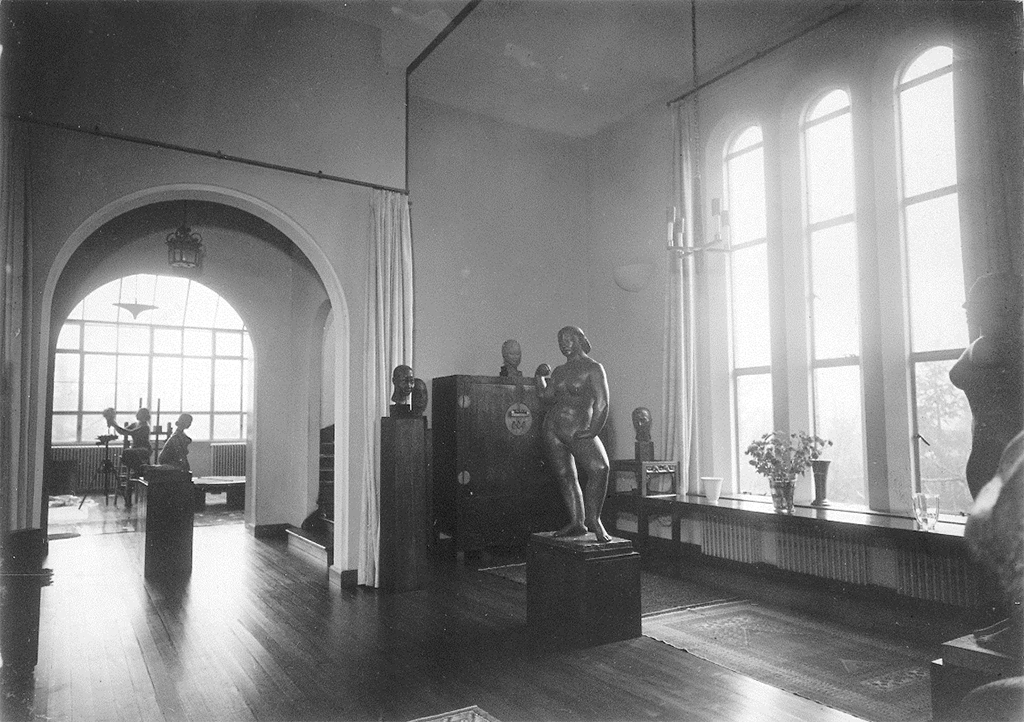
The Hares engaged Henry Ivor Cole, a builder and surveyor, to produce plans and working drawings from Gordine’s initial design for approval from the Malden and Coombe District Council. Some elements of the original design were altered in the final construction of the building, including window and door details, perhaps suggesting that financial or technical difficulties may have arisen with the unconventional modern architectural approach.
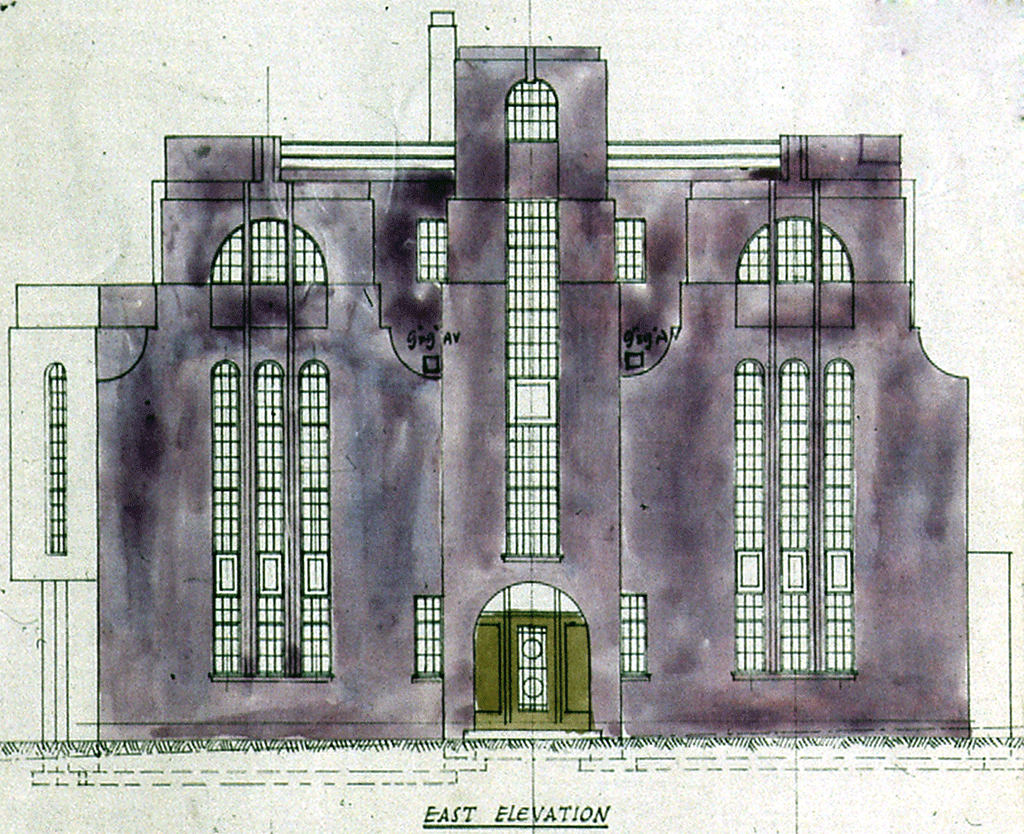
Externally, Dorich House has the severe appearance of an industrial building, using hard engineering bricks in a dull pink, with tall triple windows strikingly framed by the lines of brick mullions on the east and west elevations. They rise vertically towards the semi-circular windows on the top floor. The central square tower for the stairwells and entrance doors projects forward from the main body of the house, creating changing planes and a sculptural effect on the outside of the building, reminiscent of the elegant façade of 21b Tatari Street in Tallin, Estonia, by the architect Karl Burman (1882-1965), where Gordine had lived as a young woman.
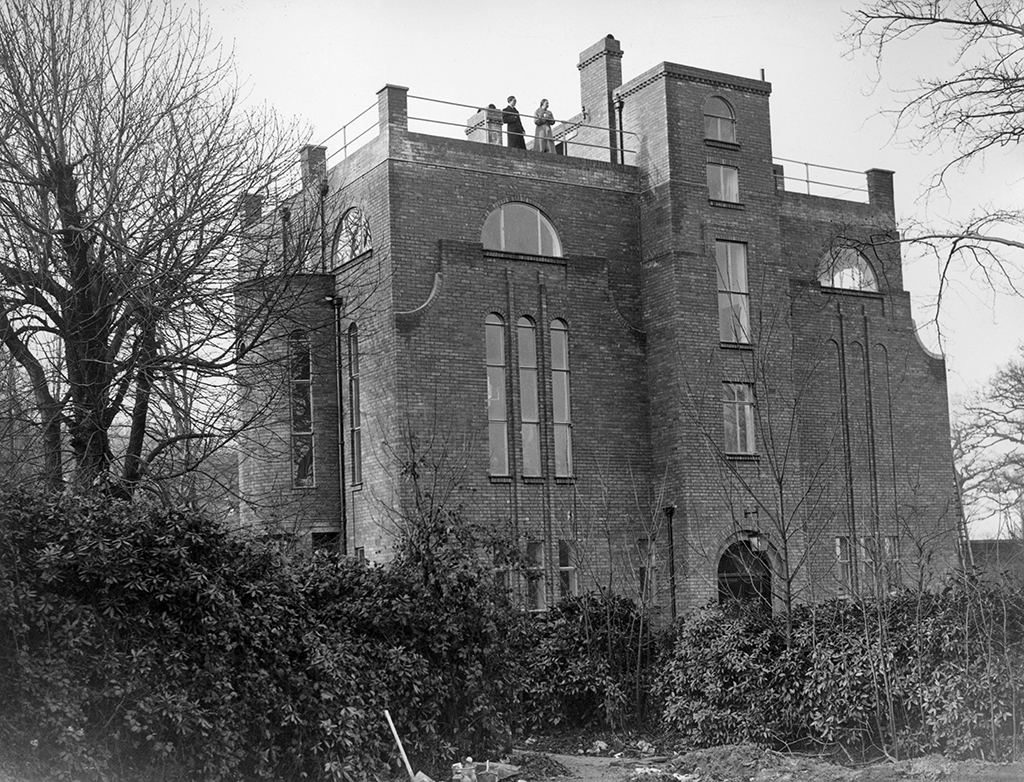
Internally, the house was laid out over three levels with a roof terrace at the top. On the ground floor, upon entering the front door, the hallway revealed a series of arches, niches and plinths to display Gordine’s sculpture. A gleaming polished Jarrah wood floor continued throughout all three floors, connecting the spaces and giving a sense of calm continuity. The hall was painted in pearl grey and lit by a slender, round-topped window on the half landing, running the height of the first two floors. Gordine used the geometric form of the circle to create rhythm and unity within the interior. She designed the spaces leading from the hall to accommodate a small cloakroom, a laundry room, a large kitchen, a garage, a study, and a maid’s room. Also on the ground floor was the plaster studio, which had large double doors to the outside, and was linked to the first floor modelling studio by a manual hoist to transport heavy sculptures between the floors.
On the first floor, two rooms opened off a central landing. A large, light and airy north-facing studio painted in grey, with a huge, glazed elevation of Crittal windows, overlooking Richmond Park. Opposite, separated by a curtain, was the gallery, painted in ivory, and flooded with natural light from a series of tall narrow vertical windows. The windows in the gallery space were designed to let light dramatically fall on Gordine’s sculptures, drawing the eye inwards to the artwork rather than the external views. Perret’s fireplace design for Gordine’s rue du Belvédère studio house in Paris informed the design of the fireplaces in the first floor gallery and the living room above.
A more modest, narrow staircase led from the first floor to the top floor apartment, where the Hares lived and enjoyed a lively social life with friends in artistic and diplomatic circles. The cream painted apartment accommodated a living room and dining room, connected via a distinctive circular moon door, a form derived from the architectural moon gates that were used in ancient Chinese garden design. The circular shape of the moon door echoing the semi-circular windows with low sills placed at regular intervals in each of the top floor rooms.
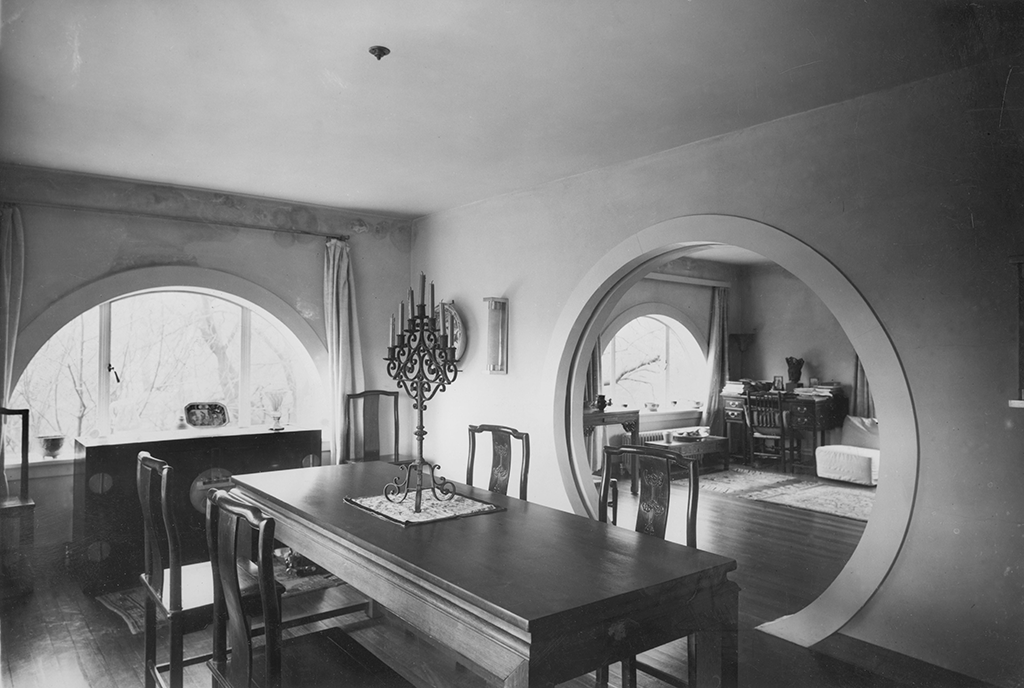
A small but neatly fitted kitchen, bathroom and sleeping quarters completed the apartment which in turn led to the roof terrace, a space for enjoying views of Richmond Park with a roofed and sheltered alcove for sleeping out.
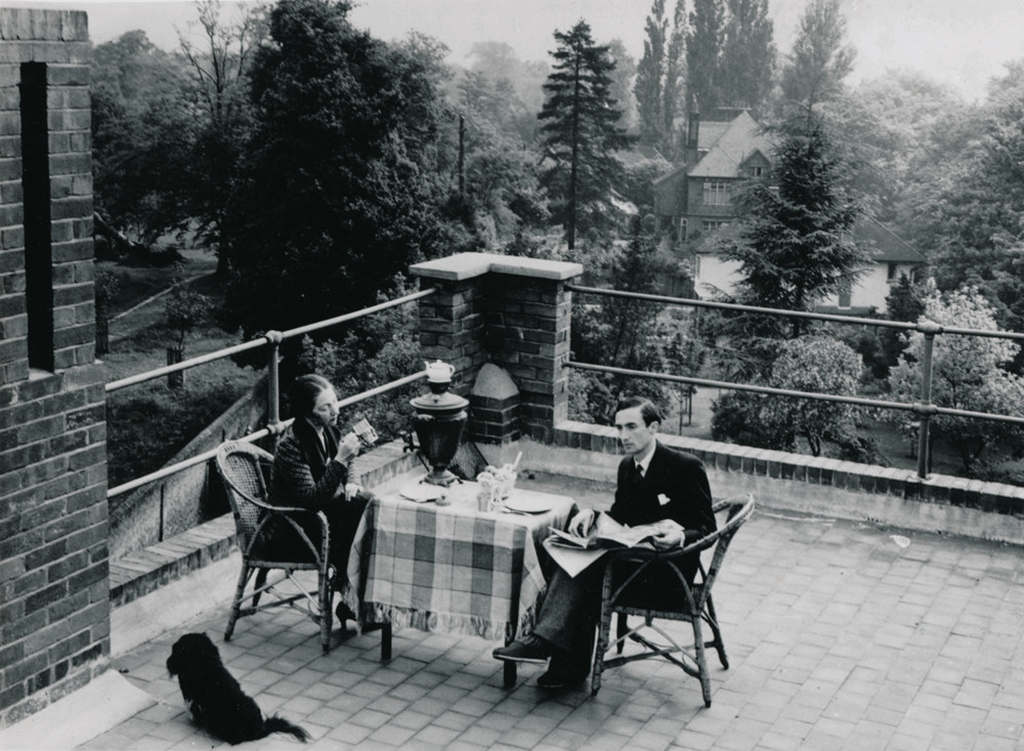
Dorich House was a statement of Gordine’s professional status as a leading sculptor and a means of expressing her identity through her highly personal take on Modernist architectural design principles. From the grand proportions of the first floor, housing Gordine’s work, to the small but comfortable private apartment, the totality provided a theatrical, exotic, and nurturing backdrop to the Hare’s modern lifestyle. To all who visited, the design presented the central idea that art – both making and collecting – was the most important thing in the couple’s lives and was embedded into every element of the house.
Published as part of the project The Squatter Years: Recovering Dorich House Museum’s Recent Past, funded by the National Lottery Heritage Fund, February 2021.

